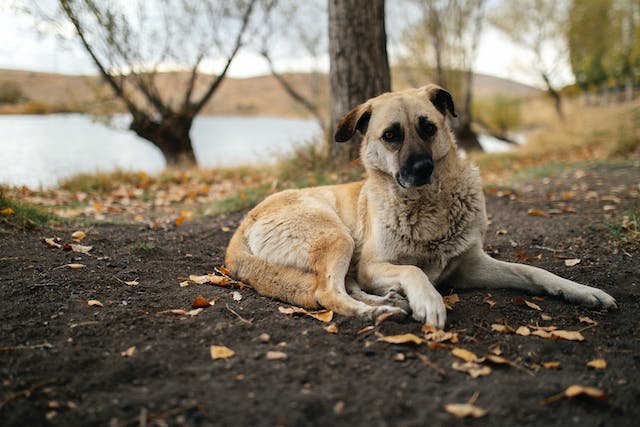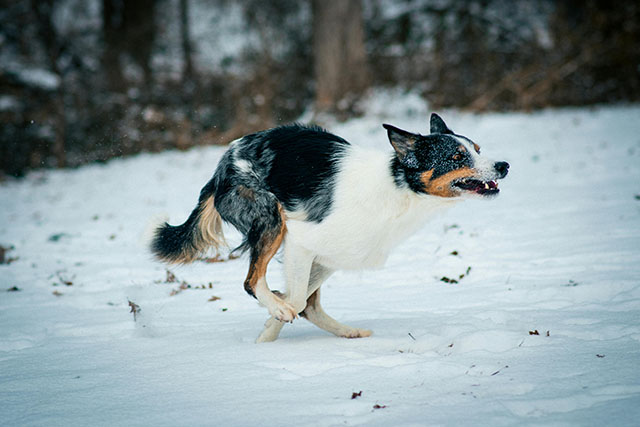There are a variety of species of ticks, and some of them can transmit harmful diseases (such as Lyme disease). Since the risk of transmission of some diseases can increase, the longer the tick is left on your pet, it’s best to remove it as soon as possible.
Knowing what a tick bite looks like on a dog is the first step, so in this article, we’ll go through the following questions:
- How do I know if my dog has been bitten by a tick?
- What do infected tick bites look like on dogs?
- What happens if you don’t remove a tick from a dog?
- What should I watch after a tick bite on my dog?
- What kills ticks on dogs immediately?
- How do I treat my dog after a tick bite?
Disclaimer: Please refer to the information in this article as a guide only. If you want specific information tailored to your pet’s condition, contact your veterinarian.
How do I know if my dog has been bitten by a tick?
Tick bites, unlike other ectoparasites such as fleas, usually aren’t particularly irritating for dogs. This means that unless your pet is particularly sensitive or the tick is in an easy-to-spot area, such as the face, then you might not know your dog has been bitten.
To be on the safe side, it’s best to check for pets for ticks following each walk outside during tick season. Ticks can vary in size, some will be easily visible but others will need careful attention. It also depends on the color of your pet’s skin, the length of their hair, and willingness for them to sit still of course!
Another method to find ticks on your dog is by feeling them. They can feel like little moveable bumps in the skin. It’s good to know that for some tick species just the nymphs and adult females are the age categories that take a blood meal.
Females are much bigger than nymphs and likely easier to find. If the tick has already taken blood (is ‘engorged’) then it will also probably be easier to spot.
Ticks tend to live on long vegetation, and then when an animal or human walks past, they carefully climb onto them. Common locations to find ticks on pets include their nose, ears, armpits, and neck.
You can read more about how to safely remove and prevent ticks in our article Tick Talk – Strategies for Preventing and Removing Ticks.
What do infected tick bites look like on dogs?
Sadly, it’s usually not possible to tell from the bite area if your pet has become infected with something from the tick. However, if you have any reason to think that your pet is unwell, it’s best to take them to your veterinarian for a proper examination.
We’ve listed some links with information about tick-transmitted diseases in dogs below:
In general, if your dog is suffering from any of the following symptoms, we’d recommend you take them to your veterinarian:
- Increased temperature.
- Lack of energy.
- Diarrhea.
- Vomiting.
- Lameness.
- Decreased appetite.
What happens if you don’t remove a tick from a dog?
It’s always better to prevent the problem in the first place rather than try to correct it. An easy way to help prevent tick bites in your pet is by using collars or giving them medication against ectoparasites. You can read more about this topic in our article Flea and Tick Prevention Tips -Recommendations for Dog Owners.
If you don’t remove a tick from your dog, the risk that they can catch a tick-borne disease increases. This is because, generally, it takes a day or so of attachment for a tick to transmit the disease.
What should I watch after a tick bite on my dog?
After you’ve removed the tick from your dog, it’s a good idea to check the area regularly for the next few days to check for any irritation or problems. Usually, following the removal of the tick, your pet will be just fine.
In rare cases, the area could become infected during the removal. Additionally, in some cases, your pet may have caught a tick-borne disease, such as those we listed earlier.
If you notice any changes in your dog’s health or behavior, then it’s best to take your dog to a veterinarian for an examination.
What kills ticks on dogs immediately?
There are a variety of methods you can use to help protect your pet from ticks, which we’ve summarised in the table below.
| Method | How it works |
| Spot on products | Deposits formulas that remain in your dog’s skin and kill ticks or fleas when they take a blood meal. |
| Oral products | Deposits formulas that remain in your dog’s skin and kill ticks or fleas when they take a blood meal. |
| Collars | Repel ticks and fleas from your dog’s neck and head area. |
How do I treat my dog after a tick bite?
If your pet has been bitten by a tick and you’ve safely removed it, besides monitoring the area and checking for any symptoms, there isn’t much else to do.
After checking that your dog doesn’t have any other tick bites, you’ll probably want to tell them how brave they’ve been and reward them with a treat or some cuddles.
If you spot any of the symptoms we mentioned earlier, or if you’re worried about your pet for any reason, then it’s best to contact your veterinarian.
Conclusion
We hope that this article has given you all the information you need if your pet has been bitten by a tick. Removing ticks quickly and carefully can help you keep your pet happy and healthy and reduce the risk of your pet suffering from a tick-borne disease.

Charlotte qualified as a veterinarian in 2023 and has been working as a writer for several years helping pet parents understand how to help their pets live happy healthy lives whilst pursuing her interests in wildlife conservation.
She enjoys traveling and has undertaken positions in Belgium, Spain, Austria, Germany, and the Galapagos and has a 15-year-old rescue dog called Chiki.





